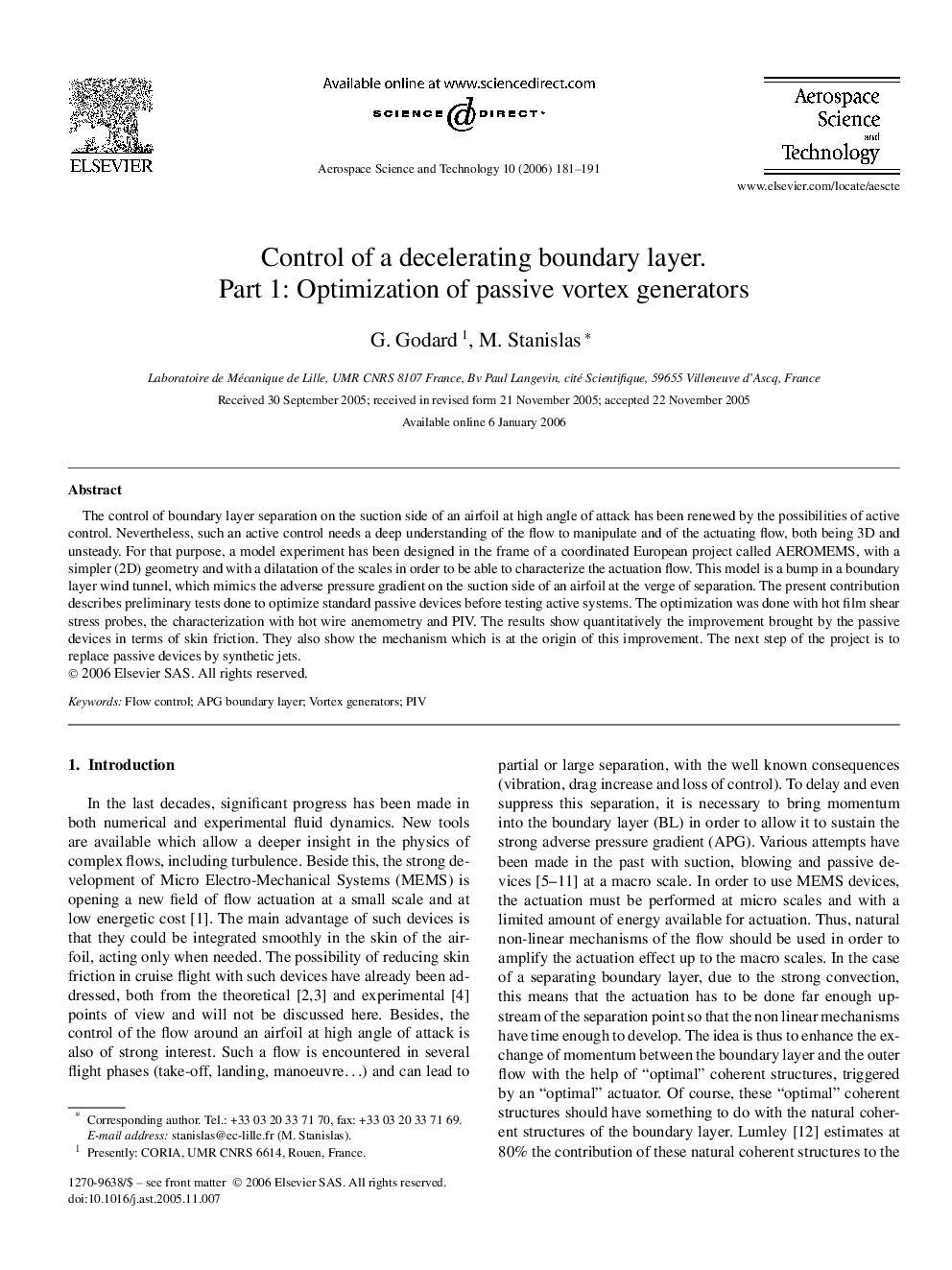| Article ID | Journal | Published Year | Pages | File Type |
|---|---|---|---|---|
| 1719071 | Aerospace Science and Technology | 2006 | 11 Pages |
The control of boundary layer separation on the suction side of an airfoil at high angle of attack has been renewed by the possibilities of active control. Nevertheless, such an active control needs a deep understanding of the flow to manipulate and of the actuating flow, both being 3D and unsteady. For that purpose, a model experiment has been designed in the frame of a coordinated European project called AEROMEMS, with a simpler (2D) geometry and with a dilatation of the scales in order to be able to characterize the actuation flow. This model is a bump in a boundary layer wind tunnel, which mimics the adverse pressure gradient on the suction side of an airfoil at the verge of separation. The present contribution describes preliminary tests done to optimize standard passive devices before testing active systems. The optimization was done with hot film shear stress probes, the characterization with hot wire anemometry and PIV. The results show quantitatively the improvement brought by the passive devices in terms of skin friction. They also show the mechanism which is at the origin of this improvement. The next step of the project is to replace passive devices by synthetic jets.
